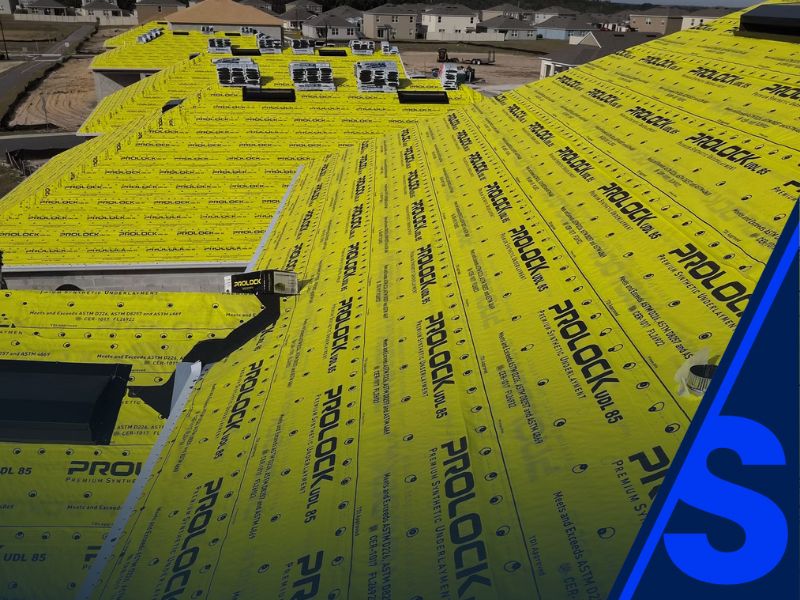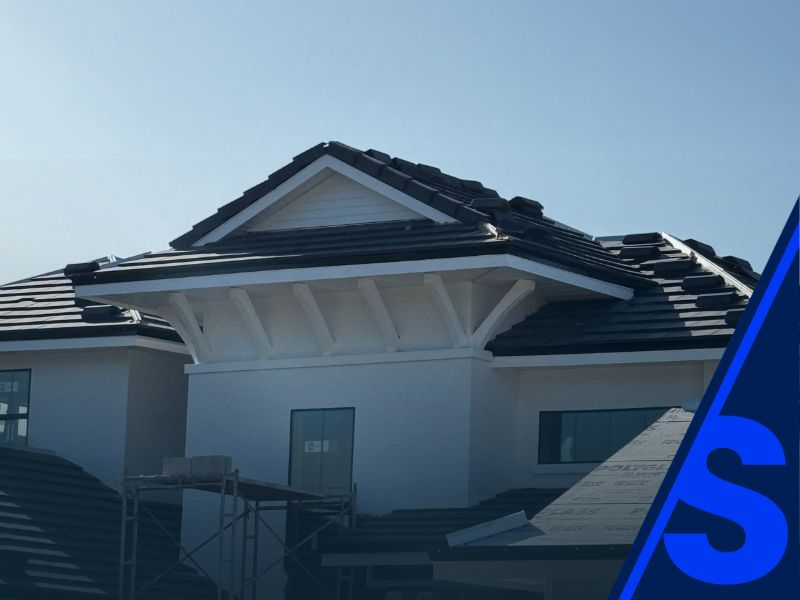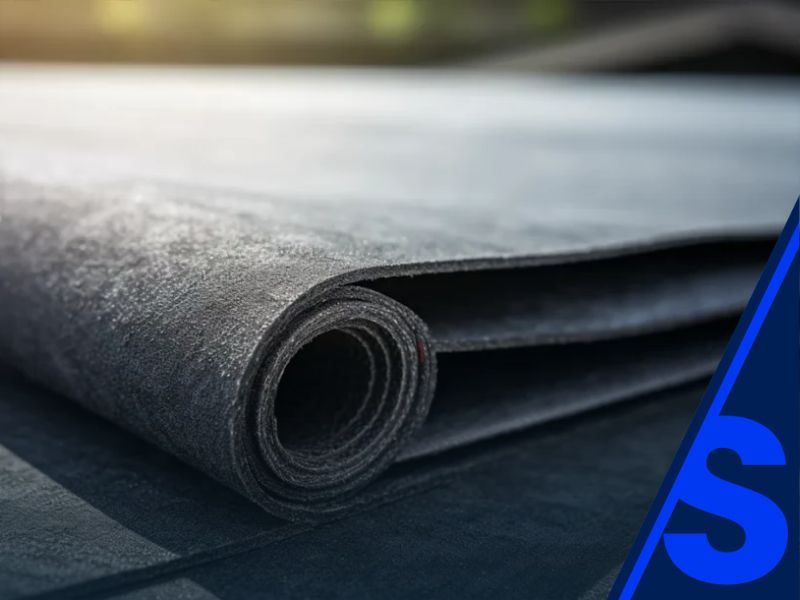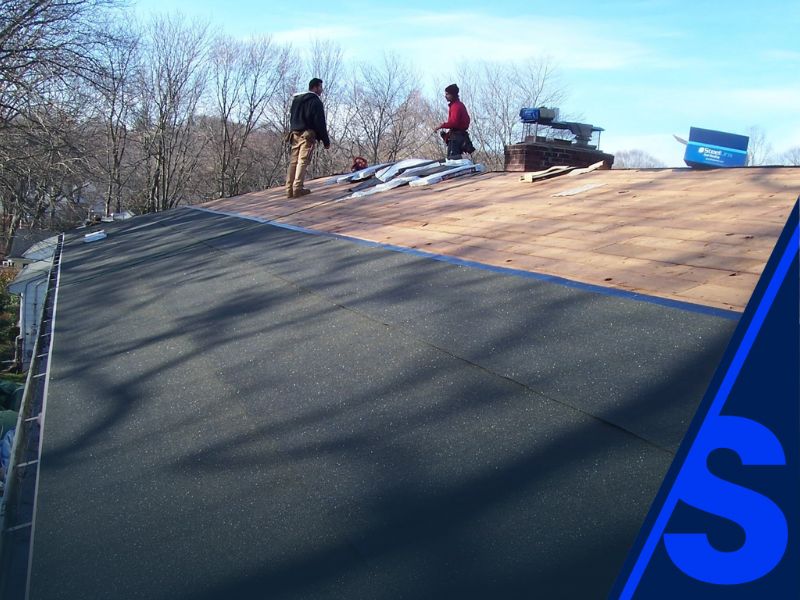Table of Contents
For builders managing new construction projects, the choice of roof underlayment is critical. A high-performing underlayment protects the roof deck, simplifies installation, ensures compliance with Florida building codes, and reduces long-term operational risks. Emerging materials are changing the landscape, offering increased durability, water resistance, and efficiency compared to traditional asphalt-saturated felt.
This guide explores the latest roof underlayment types, their technical advantages, challenges, and practical considerations for builders looking to optimize new construction projects.
What Are Roof Underlayments and Why Builders Should Care
Roof underlayments are protective layers installed between the roof deck and roofing material. They prevent water infiltration, shield against UV exposure during construction, and provide an additional layer of protection under shingles, metal roofs, or other roof coverings.
For builders, underlayments impact several aspects of a project:
- Operational efficiency – Modern synthetic and self-adhered underlayments are lighter, easier to install, and reduce labor time compared to traditional felt.
- Code compliance – Underlayment selection affects adherence to Florida building codes, especially in hurricane-prone areas.
- Quality control – Using the right underlayment reduces callbacks, protects warranties, and minimizes potential water damage.
Partnering with CitySide Roofing ensures underlayment installation aligns with project schedules, manufacturer specifications, and local code requirements.
Traditional Felt Underlayment: Pros and Limitations
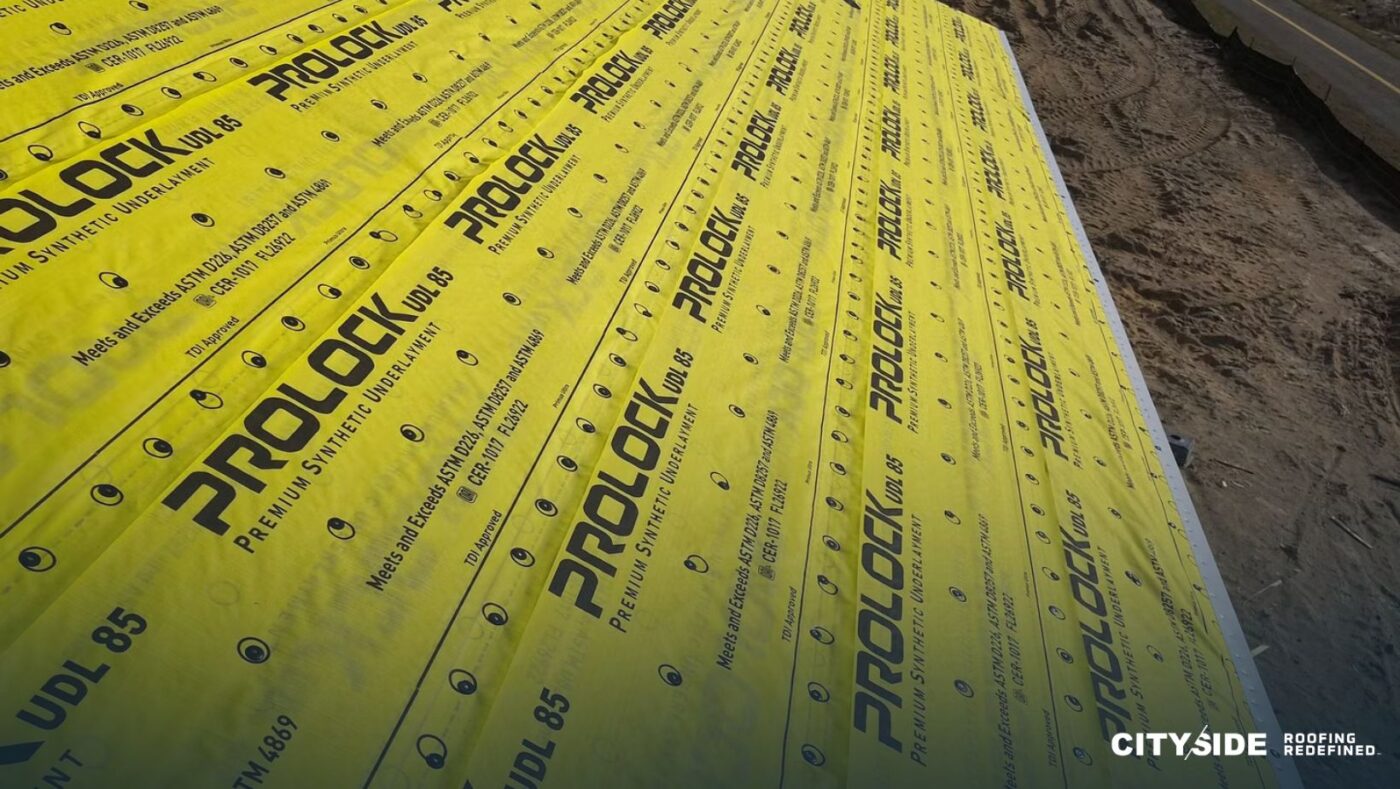
Felt underlayment, sometimes called tar paper, is one of the oldest types of roof underlayments used in the roofing industry. Typically made from asphalt-saturated paper or fiberglass, it provides a reliable moisture barrier for new construction projects.
Advantages for builders:
- Cost-effective and widely available
- Familiarity for roofing crews, reducing installation errors
- Compatible with most types of roofing, including asphalt shingles and built-up roofing
Limitations:
- Susceptible to tearing during installation, especially on steep slopes
- Heavier than modern alternatives, increasing labor intensity
- Can degrade under prolonged UV exposure during extended construction schedules
For builders aiming for operational efficiency, felt underlayment may still have a role in low-budget projects, but modern alternatives offer advantages in speed, durability, and compliance.
Synthetic Underlayment: A Modern Alternative
Synthetic roofing underlayment is made from polymer-based materials designed to overcome the limitations of traditional felt. Lightweight, tear-resistant, and water-resistant, synthetic underlayments are increasingly used in Florida new construction projects.
Builder benefits include:
- Ease of installation – Lighter weight reduces crew fatigue and speeds installation.
- Durability – Resistant to tearing, UV exposure, and ponding water.
- Code compliance – Many synthetic underlayments meet or exceed Florida Building Code requirements for water resistance and wind uplift.
Using synthetic roofing underlayments allows builders to reduce installation time, improve quality control, and minimize potential disruptions on-site.
Rubberized Asphalt Underlayment: High-Performance Option
Rubberized asphalt underlayment offers superior waterproofing, adhesion, and self-sealing properties around roof penetrations such as vents, skylights, and HVAC units. This makes it a preferred choice for critical areas like roof edges, valleys, and transitions.
Advantages for builders:
- Creates a waterproof barrier that adapts to substrate irregularities
- Helps prevent leaks around penetrations, reducing rework
- Meets high wind and hurricane resistance requirements for Florida new construction
The main trade-off is cost—rubberized asphalt underlayment is typically more expensive than felt or synthetic options, but for projects requiring maximum protection and warranty compliance, it can reduce lifecycle risks.
How Type of Roofing Impacts Underlayment Choice
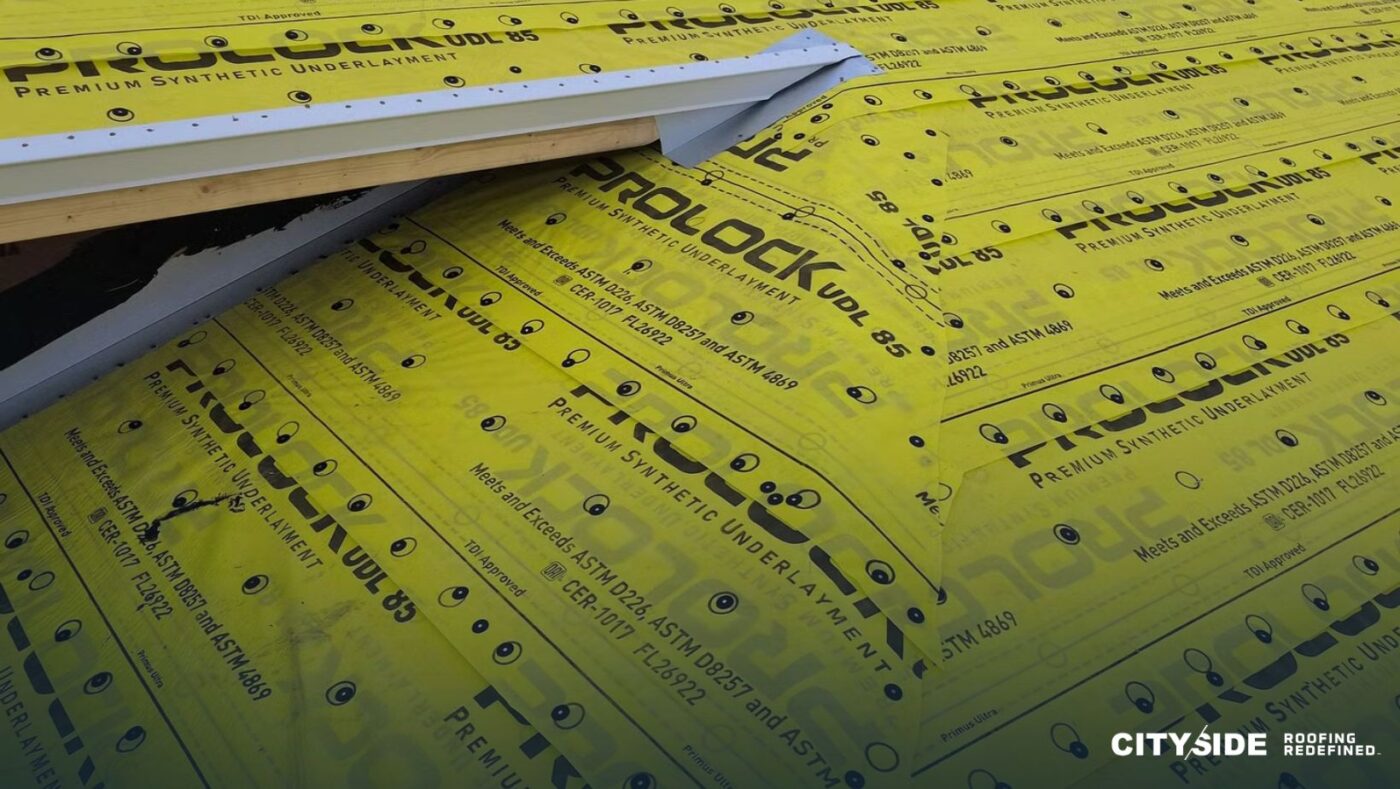
The type of roofing material significantly influences the selection of roof underlayments, making it one of the most critical decisions for builders managing new construction. Using the right new roof underlayment materials ensures the roof sheathing remains protected, installation is efficient, and the overall roof system meets Florida building codes. Each type of underlayment offers unique properties that interact differently with shingles, metal panels, or flat roofing systems, and builders must evaluate these options carefully to reduce operational risk and improve long-term durability.
For asphalt shingles, traditional asphalt-saturated felt underlayment and modern synthetic roofing underlayments are both commonly used. 30 felt or felt paper provides a tried-and-true moisture barrier that covers the entire roof, protecting your home during construction and early weather exposure. Synthetic alternatives, however, offer enhanced tear resistance and a lighter weight, allowing crews to install underlayments faster while reducing labor costs. Choosing the right type of underlayment for asphalt shingles can also streamline warranty documentation and minimize callbacks due to moisture penetration or material failure.
For metal roofs, builders often prefer synthetic underlayments or self-adhered membranes. These underlayment options prevent slippage, reduce condensation issues between the metal panels and roof deck, and provide a stable, durable base that extends the lifespan of the roof system. Selecting the appropriate underlayment for roofing ensures that fasteners hold properly, roof edges are protected, and the roof meets Florida’s wind and waterproofing code requirements. In high-humidity climates or areas prone to heavy rain, synthetic underlayments offer superior protection compared to traditional asphalt-saturated felt roofing underlayment.
Flat or low-slope roofs require careful consideration. These systems benefit from rubberized asphalt underlayments or self-adhered membranes that are highly waterproof and can withstand ponding water without compromising the roof deck. Flat roofing applications also demand continuous coverage across the entire roof surface to prevent leaks at seams and penetrations. For builders managing these projects, investing in high-quality underlayment products not only protects the roof during construction but also supports long-term warranty compliance and reduces lifecycle costs.
When selecting type of roofing underlayment, builders should weigh factors such as the roofing material, slope, substrate condition, and climate exposure. While traditional asphalt-saturated felt underlayment is still viable for many projects, modern underlayments like synthetic sheets or rubberized asphalt roofing provide additional durability, reduced installation time, and better protection of the roof sheathing. Builders should always ensure underlayment helps mitigate moisture risks, protect the roof deck, and comply with Florida’s building codes to prevent costly rework or water damage.
Underlayment Installation Best Practices for Builders
Proper installation of roof underlayments is critical to achieving maximum protection and maintaining operational efficiency. Builders must follow best practices to ensure that the underlayment for roofing performs as intended across different substrates and roof types.
- Roof deck inspection – Before installation, confirm that the roof deck exists in a structurally sound condition, free from moisture, debris, or damage. Correct preparation is essential for any type of underlayment to adhere properly and perform as a protective barrier.
- Alignment and overlap – Each layer of underlayment must be applied with the correct lap distances across the entire roof. This ensures that rain or wind-driven water cannot penetrate seams, protecting your home and reducing warranty risks.
- Fastening methods – Use nails, staples, or adhesive backing as recommended by the manufacturer to guarantee the underlayment remains fixed under Florida’s high-wind conditions. Underlayments that are improperly fastened can lead to lifted sections or roof deck exposure during storms.
- Critical areas attention – Valleys, roof edges, and penetrations demand extra care. Additional layers or specialized underlayment products should be applied to prevent water infiltration and meet Florida building code standards.
Partnering with CitySide Roofing ensures these best practices are incorporated into project schedules, reducing installation errors and improving quality control across all roof projects.
Emerging Underlayment Materials and Innovations
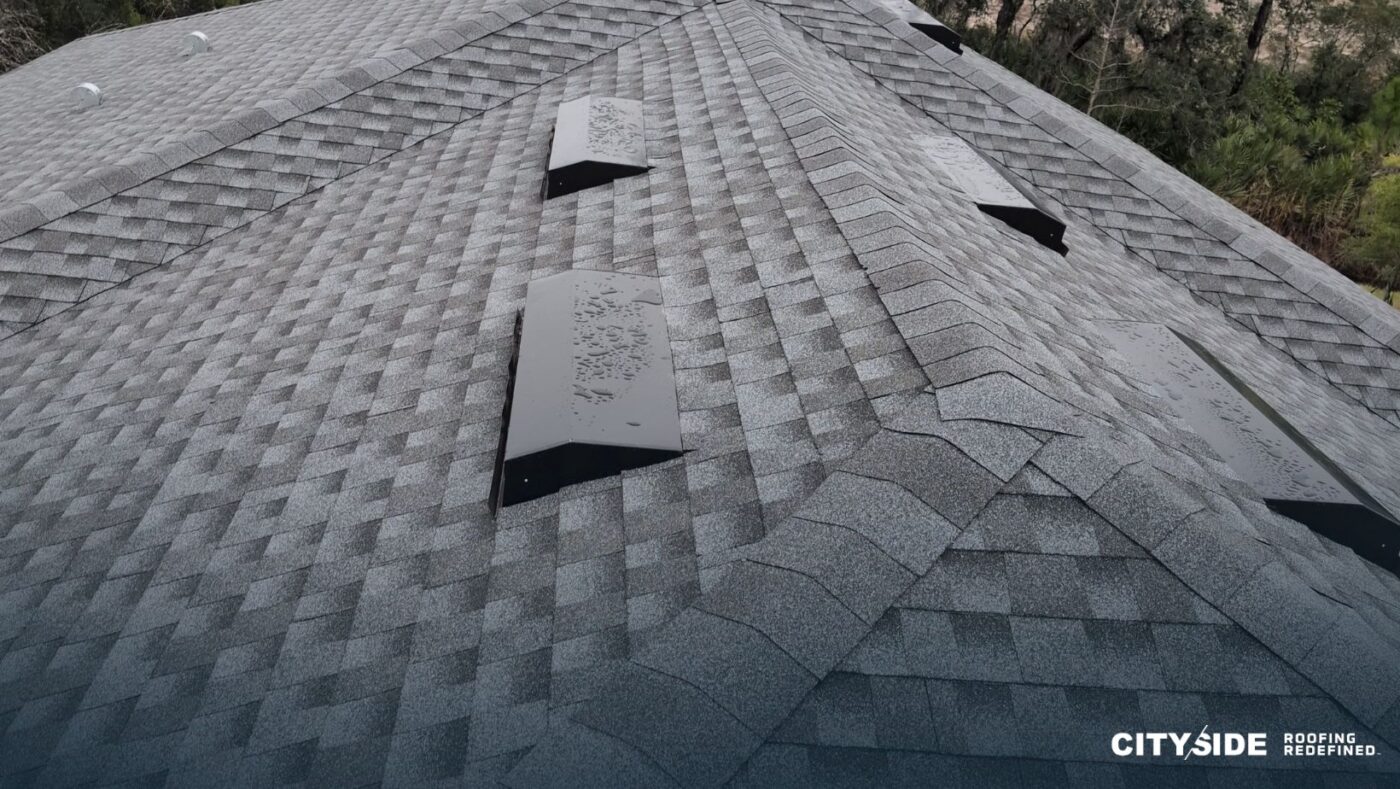
The roofing industry continues to evolve with new underlayment materials designed to improve durability, operational efficiency, and code compliance. Builders now have several advanced underlayment options to choose from depending on the type of roofing and project requirements.
- Self-adhered membranes simplify installation and provide superior waterproofing around roof penetrations, helping builders adhere to tight project timelines.
- High-temperature synthetic underlayments resist UV and heat degradation, ensuring long-term protection for roof sheathing during construction and over the life of the roof system.
- Composite underlayments combine polymer and asphalt layers to provide improved water resistance, durability, and tear strength, reducing callbacks and enhancing builder confidence in the roof installation.
- Slip-resistant surfaces improve crew safety on steep or metal roofs, which is essential when managing multiple crews on large-scale new construction projects.
These innovations make it easier for builders to protect their roofs, reduce rework, and meet Florida’s strict building codes while maintaining operational efficiency.
Protecting the Roof Deck During Construction
The roof underlayment serves a critical role in protecting the roof deck from moisture intrusion, UV exposure, and construction traffic. Especially in Florida, where heavy rain can occur with little warning, underlayments safeguard structural integrity and help avoid costly delays.
Builders should coordinate underlayment installation with other trades to ensure the entire roof remains covered and undamaged throughout the project. Using high-quality underlayment products, such as synthetic underlayments or rubberized asphalt underlayment, protects the roof sheathing and helps prevent issues that can compromise building code compliance. Integrating these steps into the overall construction schedule is critical for project efficiency and quality assurance.
Choosing the Right Underlayment for Your Project
Selecting the correct type of underlayment requires weighing several factors:
- Roofing material compatibility – Asphalt shingles, metal roofs, and flat roofs each require specific underlayments to adhere properly and protect the roof deck.
- Climate and weather exposure – Synthetic and rubberized asphalt underlayments offer enhanced water resistance for Florida’s high rainfall and UV conditions.
- Florida building code compliance – Underlayments must meet wind uplift and waterproofing requirements to pass inspections and secure warranties.
- Installation efficiency – Lightweight synthetic roofing underlayments or self-adhered options reduce labor costs and installation time.
- Long-term durability – High-performance underlayments extend the lifespan of the roof system, protect your home, and reduce maintenance risks.
Choosing the right underlayment helps builders protect roof sheathing, meet roofing code compliance, and reduce operational risks throughout construction.
Cost Considerations and Lifecycle Planning
While modern synthetic underlayments and rubberized asphalt underlayments have higher upfront costs than traditional asphalt-saturated felt underlayment, they often result in lower long-term operational expenses. Reduced installation time, fewer callbacks, and enhanced protection for the roof deck make them a cost-effective choice for builders managing multiple projects.
Builders should incorporate underlayment options into project budgets, considering installation efficiency, compliance with Florida building codes, and long-term protection of the roof system. Properly selected underlayment materials safeguard the entire roof, prevent water damage, and maintain project timelines without compromising quality.
Summary: Key Builder Takeaways
- Roof underlayments are a critical component of new construction, protecting the roof deck and ensuring code compliance.
- Felt underlayment remains cost-effective, but modern synthetic and rubberized asphalt options offer superior durability, water resistance, and installation efficiency.
- The type of roofing and project climate directly influence underlayment selection.
- Proper installation, inspection, and integration into construction schedules minimize operational risks.
- Partnering with a professional roofing contractor ensures adherence to Florida building codes and manufacturer specifications.
For builders seeking expert installation, operational efficiency, and code-compliant roof underlayments, contact CitySide Roofing to schedule a consultation and learn about the latest underlayment innovations for your next project.
